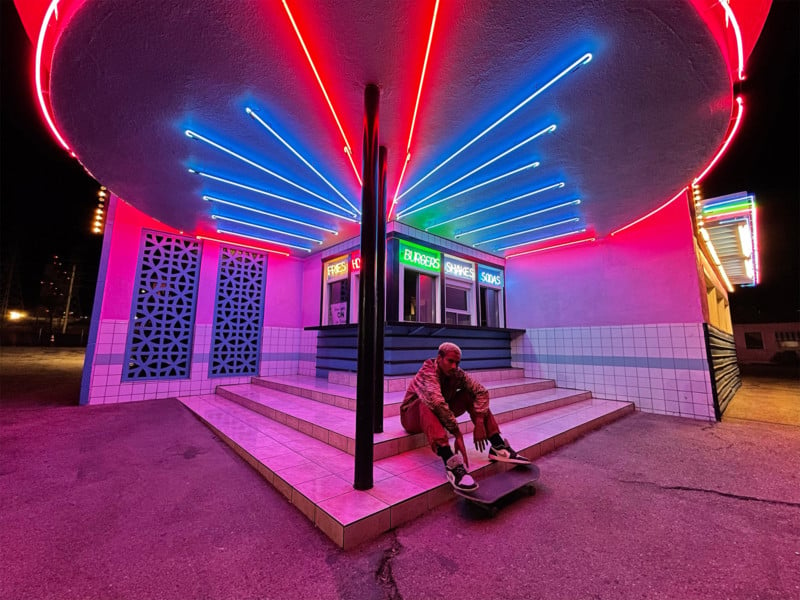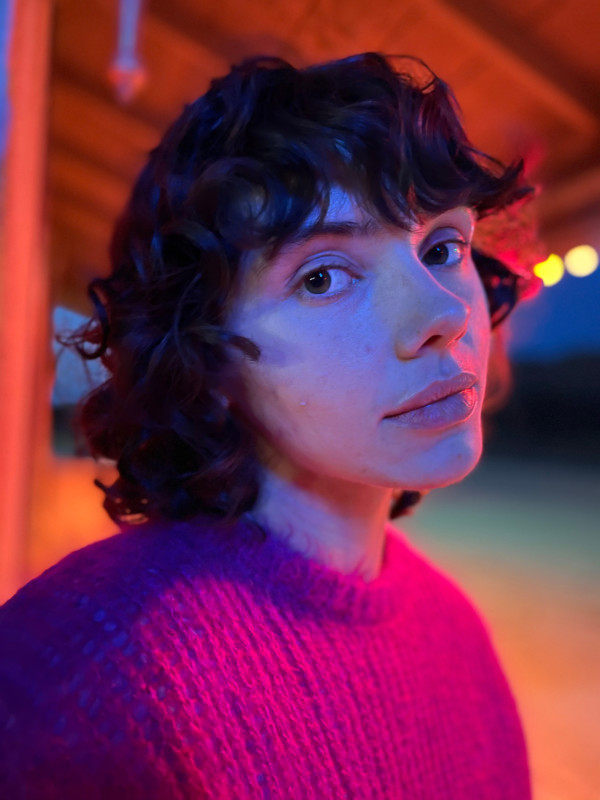iPhone 12 Pro Max Gets Larger Sensor, IBIS, and Apple ProRAW
![]()
Apple has announced the iPhone 12 Pro and iPhone 12 Pro Max smartphones that feature a three-camera lens array (wide-angle, ultra-wide angle, and telephoto), improved Night Mode, and can edit and capture in Dolby Vision. The Pro Max gets even greater capture support with a 47% larger sensor and IBIS.
The iPhone 12 Pro and Pro Max share a lot in common, including improvements to Smart HDR, Deep Fusion, and Night Mode. The camera is improved thanks to Apple’s A14 Bionic chip and a new image signal processor (ISP). Together, they produce increased image quality and enable “powerful computational photography capabilities” that Apple says are not possible with traditional cameras.
Camera Design
There are some major differences between the iPhone 11 Pro and the iPhone 12 Pro Max.
iPhone 12 Pro features the new seven-element lens design on the Wide-angle, and thanks to an ƒ/1.6 aperture it sees a 27 percent improved low-light performance in photo and video. The Ultra-Wide camera has a 120-degree field of view, and the third camera features a 52 mm focal length Telephoto lens.
![]()
The main differentiator between the Pro and Pro Max is the sensor size, which as mentioned is 47% larger on the Pro Max. That larger sensor should provide better dynamic range, better performance in low light, and overall higher image quality than any other iPhone. In fact, Apple says the low light performance of the Pro Max sees an 87% improvement over former devices.
The larger physical size of the iPhone 12 Pro Max allowed them to do more with the camera system as well, increasing the zoom on the telephoto camera to 65mm. This means that the Pro Max features a very large zoom range, from 13mm ultra-wide through 65mm zoomed. Additionally, the Pro Max uses on-sensor stabilization via sensor-shift technology, which is common on full-size mirrorless cameras. The sensor can make 5000 micro adjustments per second, and that stabilization means you can expose for up to two seconds handheld in low light. It delivers steady video as well, as expected.
![]()
The camera sensor captures multiple images in the Image Signal Processor, computes them, and then runs them through a neural engine powered by the A14 Bionic chip. Deep Fusion, which is Apple’s technology for blending multiple frames together to make one image, Deep Fusion, now better and faster, comes to all cameras (including the front-facing camera), and with the new Smart HDR 3, users can expect more true-to-life images, even in complex scenes.
Night Mode

Improvements to Night Mode, now expanded to the TrueDepth and Ultra Wide cameras, allow for an even brighter picture. Apple’s new Night Mode Time-Lapse should deliver longer exposure times for sharper videos, better light trails, and smoother exposure in low-light scenarios when used with a tripod.
Equipped With LiDAR
The iPhone Pro devices will also feature LiDAR, which is a method for measuring distances by illuminating a target with a laser and measuring the reflection via the sensor. It enables object and room scanning and precise placement of AR objects. With the iPhone 12 Pro, LiDAR is used for autofocus in low light scenes and therefore improves accuracy. It can identify a subject, focus, and capture even faster and works in both photo and video. You should see six times faster autofocus performance in low light, and it can also allow for better portraiture effects in low light.

HDR and Dolby Vision
Apple has also allowed HDR video recording on iPhone for the first time with both the iPhone 12 Pro and Pro Max. You can record in 10-bit HDR, with 700 million colors (60 times more colors than before). You will have access to a live preview of HDR content while shooting and the iPhone 12 Pro Max is the first camera to record in Dolby Vision HDR up to 60 frames per second. Dolby Vision, which is Dolby’s proprietary HDR, is a format in which more studios are capturing and mastering and is being supported by more televisions each year. The iPhone 12 Pro and Pro Max can grade all frames in Dolby Vision, live, while recording.
Dolby Vision grading is processed live and sustained during editing, whether in the Photos app or iMovie, and coming to Final Cut Pro X later this year. Dolby Vision takes advantage of the Super Retina XDR display for amazing contrast during capture and video playback, and users can share their videos with support for AirPlay up to 4K Dolby Vision to external devices.
Apple says it is the first device to allow for both capture and edit of Dolby Vision, as files can be edited from the Photos app.
Apple ProRAW
Apple will be releasing an update later this year that allows for what they are calling Apple ProRAW. The format combines multi-frame image processing via computational photography with the flexibility of a RAW format. It gathers several layers of data and holds them independently, rather than baking them into an image, and does so at the moment of capture without any delay.
![]()
You can expect full creative control over color, detail, and dynamic range natively in the Photos app, and Apple will be launching an API for all editors on both smartphones and desktop computers to work with the new file type.
![]()
![]()
![]()
![]()
The iPhone 12 Pro will start at $999 and the iPhone 12 Pro Max starts at $1,099, with more expensive options available for each depending on chosen storage capacity. You can learn more about the new smartphones here. Both can be pre-ordered on October 16 and begin shipping in numerous countries starting October 30.